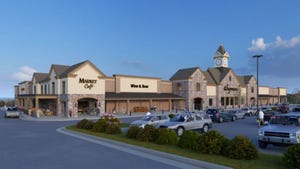3 Strategic Paths To Success for Grocery
Eric Karlson, Managing Director of Customer Strategy, and Erich Kahner, Associate Director of Customer Strategy, at dunnhumby discuss strategic paths for grocery. On the other hand, more traditional grocery stores – rather than adopting any of these three strategic paths forward – are more likely to be prisoners of the past.
July 17, 2019

Sponsored by dunnhumby
In the grocery segment, there are as many strategies for competing as there are retailers. However, the retailers with the strongest financial success and emotional bond with their customers generally follow one of three different strategic paths forward, and they do so consistently over time. These paths are most commonly followed by non-traditional grocery formats (e.g. club, smaller format specialty, mass, digital pure play). On the other hand, more traditional grocery stores – rather than adopting any of these three strategic paths forward – are more likely to be prisoners of the past.
The three paths are: Price-focused, quality-focused, and value-focused.
Price-focused retailers are characterized by having exceptionally strong price perception and average or lower-than-average quality perception. They’ve chosen one or two things within quality to be good at – like store cleanliness – and have sacrificed other areas of quality, like customer service or a less-premium and diverse product selection. Instead, these price-focused retailers are re-investing their profits to keep prices low. Examples of price-focused retailers are Walmart and Aldi, which both use scale and other cost-containment practices, albeit in different ways, to win on price. Walmart flexes its muscle when negotiating costs with national brand suppliers and limits marketing overhead by being less promotion-based than other retailers, whereas Aldi provides a limited-SKU, private brand-dominant offering to maximize product turnover. Both aim for efficiency in their distribution network and use their volume to maximize their pricing power.
Quality-focused retailers have exceptionally high quality perception and average or below-average price perception. They have exceptional performance in nearly every area of quality underneath store experience and products offered. As a result, they charge higher prices to cover the costs of offering higher quality. These retailers, since they serve a smaller segment of the overall population, tend to be less financially successful than price-focused retailers, grabbing less market share and experiencing slower sales growth during the past five years; but, they have stronger emotional bonds with their customers. For example, Wegmans is one of the most successful quality-focused retailers and ranked number one in quality in the latest Retailer Preference Index.
Value-focused retailers have managed to earn above-average quality and price perceptions. Their price and quality perceptions aren’t as strong as the best price-focused or quality-focused retailers, but their balanced offering gives customers superior value while differentiating them from other leading chains. These stores are characterized by having non-traditional grocery formats and/or an exceptional private label. In order to have great prices, these stores often have more limited grocery SKUs, allowing them to maximize inventory turns, scale, and efficiency. They offer great quality by being able to focus on managing a more curated product assortment, as opposed to just a broader assortment. This provides products their customers want, through only a few SKUs per category, which also simplifies the shopping experience for customers. Couple this with a margin-friendly, private label-heavy offering, or simply a private brand customers love, and these companies have more cashflow to invest back into other areas – like a memorable store experience or new product development. Costco and Trader Joe’s are the best examples of this balanced, unique approach.
Traditional, regional grocers – characterized by their extensive grocery SKU-count and legacy footprint densely populating a given region – haven’t historically followed any of these approaches. Therefore, their current assets and competencies are often not well-aligned to follow any of these more successful, strategic directions. And, due to the entrenched systems and processes developed incrementally over decades, they have trouble nimbly reorganizing to move in one of these directions. As a result, too many things are a priority and they are relegating themselves to, at best, being average at everything. And they are following an omnipresence strategy, where they have so many storefronts in one area to try to keep enough customers shopping there. However, this lack of differentiation and weaker value proposition will translate into lower profits and thus, less opportunity to innovate. This will only lead to widening gaps in price and quality with the leading, more focused retailers, while visits and basket sizes at unfocused retailers will slowly dwindle.
A Closer Look at H-E-B
One traditional retailer, H-E-B, has succeeded better than any in achieving financial success and a strong emotional bond with customers while also managing to follow a focused path (that of the value-focused retailer). It is one of the few traditional retailers to achieve a balanced-value position, making it a unicorn among this group. From the outside (and with a quick glance inside), H-E-B looks like a typical neighborhood grocery store – many of which have inferior customer preference to the focused, non-traditional retailers mentioned above. However, H-E-B’s quality and price perception rivals Trader Joe’s and Costco. The secret to H-E-B’s success likely lies in an excellent strategic planning process and smart operational execution. Some of these secrets are revealed in what customers think about H-E-B, including the following.
H-E-B may grab headlines for the quality of its experience and products, but its price perception, while not clearly superior to most of the market, is above average. The chain is likely able to maintain this with a focus on providing a superior private label offering; its private brand scores are equal to that of well-known private label leaders Costco and Trader Joe’s. This focus allows them to provide higher quality products at more competitive prices. Additionally, at least some of their stores demonstrate smart approaches to store operations – instead of an “invisible” storeroom far removed from the floor, the storeroom frames up the entire store in a narrow extra ring, with products stored as close as possible to where they are stocked.
This focus on private label underscores H-E-B’s focus on getting the correct product selection in general. The chain also has some of the highest scores in the study for having the right variety of products to meet a customer’s needs.
This cost-efficient approach to assortment selection and stock-keeping likely allows them to maintain higher levels of quality at lower prices while preserving margins.
Some H-E-B stores clearly provide a unique experience with solid customer service. They have effectively executed the “store within a store” approach, offering clear signage indicating where things are. They have trendy sections (for example, a whole set for those on the paleo diet), and they showcase their local Texas pride throughout the store by featuring local Texas products. They do this without appearing to be too upscale – just clean and well-maintained.
For non-traditional grocers who have an offering that is already tailored around a limited set of SKUs or around real-estate that aligns with a specific customer target, orienting the business in one of the three above strategic paths for success is easier. For traditional grocers that have assets and competencies better suited for rules of an outdated game that didn’t involve competition against non-traditional retailers, the task is more difficult and will involve the hard decisions that accompany any reorganization. However, the first step is clear, and that is identifying the ingredients for a successful strategy. Those ingredients are:
An understanding of customer needs, both today and in the future.
An understanding of how well the organization and competitors are meeting those needs.
What the store’s unique assets and competencies are, compared to the competition.
With those ingredients, stores can determine what needs to be done to optimally align their organization to their customers’ needs and the market in order to best compete – now as well as going forward.
You May Also Like




